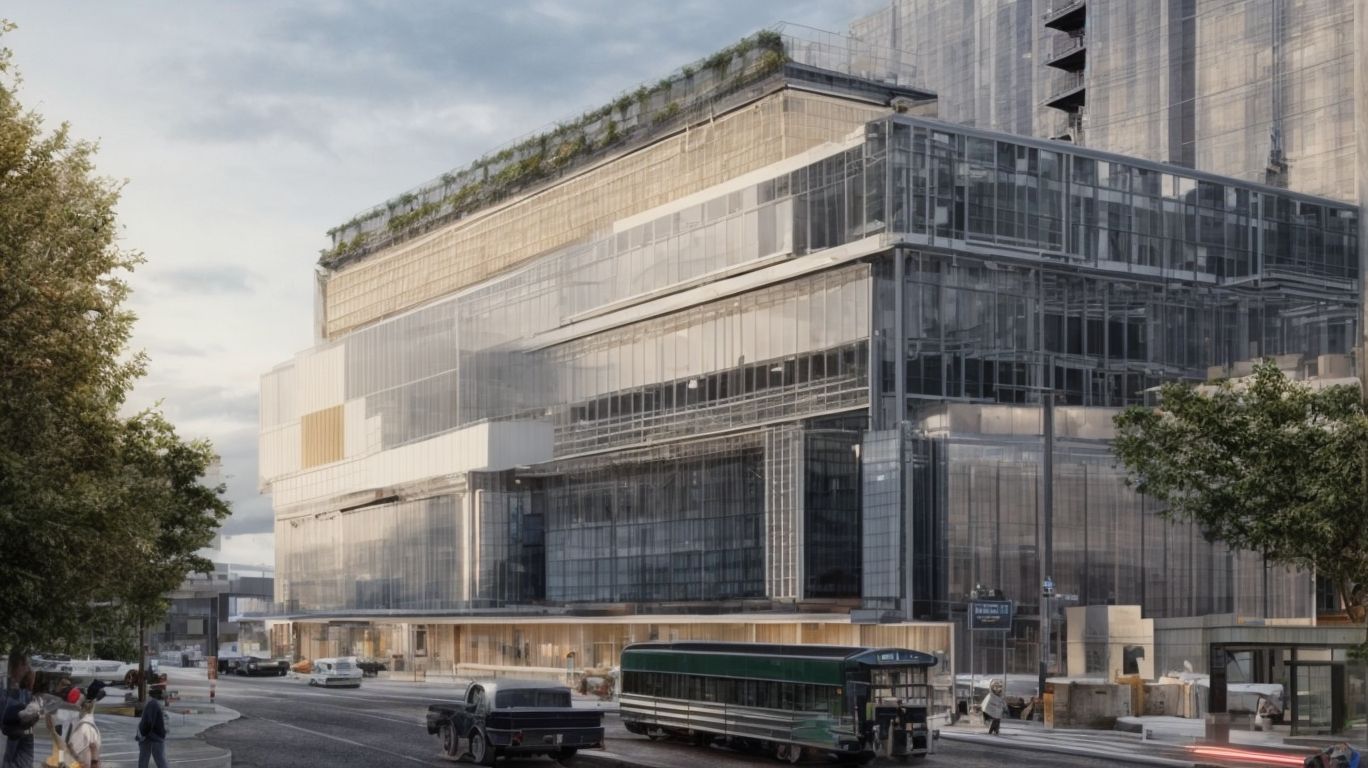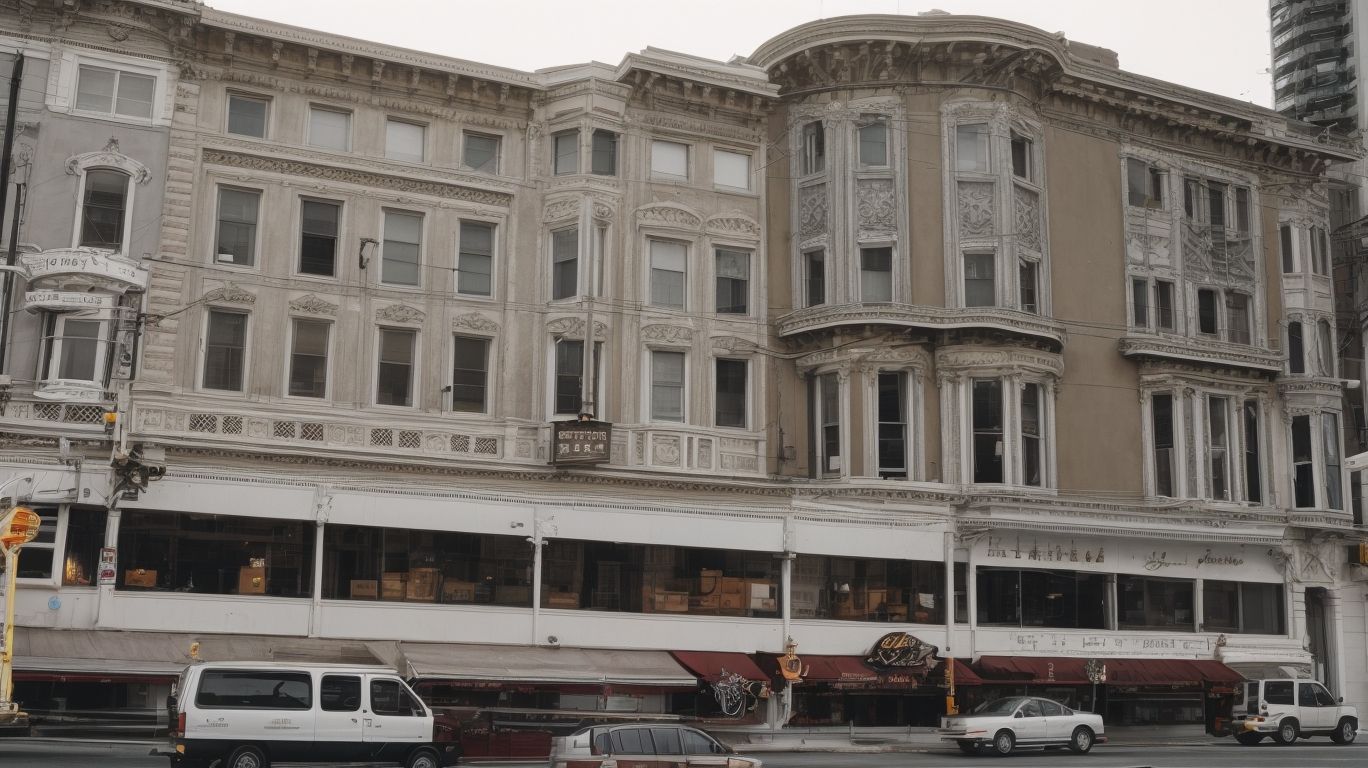
Estimating the Cost of Soft-Story Retrofitting in SF
Soft-story retrofitting has become a necessary measure for buildings in earthquake-prone areas like San Francisco. But what exactly is soft-story retrofitting, and why is it so important?
In this article, we will explore the benefits of soft-story retrofitting, the factors that affect its cost, and how much building owners can expect to pay for this crucial upgrade in San Francisco. We’ll also share some tips on how building owners can save on soft-story retrofitting costs.
So, if you own a soft-story building in San Francisco, you won’t want to miss this essential information.
What Is Soft-Story Retrofitting?
Soft-Story Retrofitting is a seismic upgrade process that enhances a building’s stability and safety, particularly in areas with high seismic activity such as San Francisco.
Soft-story retrofitting is a technique used to reinforce the ground floor of a building with weaker or open front walls. This helps the building better withstand lateral forces generated by earthquakes. This method is particularly important for multi-story buildings with open parking or commercial spaces on the ground level, as it addresses their vulnerability.
Not only does soft-story retrofitting ensure compliance with building codes and regulations, but it also reduces the risk of severe structural damage and potential collapse during seismic events. While the cost estimation and structural engineering involved may require careful consideration, it is a prudent investment in safeguarding lives and preserving property.
Why Is Soft-Story Retrofitting Necessary?
Soft-Story Retrofitting is necessary to mitigate the seismic hazard and enhance the structural integrity of buildings, reducing the risk of collapse during earthquakes and ensuring overall building resilience.
This type of retrofitting plays a crucial role in seismic assessment. It helps in evaluating the vulnerability of buildings to seismic forces.
Soft-story retrofit design focuses on reinforcing the weakest areas of a building. This ensures that it can withstand the impact of seismic events. By reinforcing the foundation and enhancing the lateral load resistance, soft-story retrofitting significantly improves the overall safety of the structure. It makes it more resilient against potential seismic threats.
What Are Soft-Story Buildings?
Soft-story buildings are characterized by weak or open front walls on the ground floor, making them susceptible to structural vulnerability during earthquakes and necessitating retrofit solutions to enhance their seismic performance and overall stability.
Soft-story buildings are a common sight in urban areas, typically built during a time when building codes did not prioritize lateral resistance. As a result, the lack of reinforcement in the ground floor makes these buildings vulnerable to damage and potential collapse during seismic events.
To mitigate this risk, retrofitting options include adding bracing or strengthening existing walls to improve the building’s ability to withstand lateral loads. By addressing the structural weaknesses of soft-story buildings, communities can reduce the impact of earthquakes, potentially saving lives and minimizing property damage.
What Are the Benefits of Soft-Story Retrofitting?
Soft-Story Retrofitting offers multiple benefits, including the reduction of seismic vulnerability, mitigation of earthquake risk, enhancement of building safety, and the implementation of an effective retrofit process to strengthen the building.
This retrofitting method is particularly impactful in areas prone to seismic activities, as it significantly minimizes the structural weaknesses that are characteristic of soft-story buildings.
By reinforcing these vulnerable areas, the overall structural integrity of the building is greatly improved, resulting in heightened resistance to seismic forces and reduced risk of collapse during an earthquake.
In addition, the process not only ensures compliance with building safety regulations but also increases the property value and provides inhabitants with peace of mind knowing their building is safeguarded against potential seismic hazards.
Increases Structural Integrity
Soft-Story Retrofitting involves increasing the structural integrity of buildings through a comprehensive process that includes a structural assessment, budget allocation for construction, and meticulous building inspection.
This process begins with a detailed structural assessment, evaluating the existing weaknesses and vulnerabilities in the building’s design and construction.
Once the assessment is completed, a construction budget is carefully allocated to cover the costs and resources needed for the retrofitting work.
The rigorous building inspection procedures involve thorough checks to ensure that the retrofitting work meets the required standards and regulations, providing a safe and resilient structure against seismic events.
Reduces Risk of Collapse During Earthquakes
Soft-Story Retrofitting significantly reduces the risk of building collapse during earthquakes by implementing effective retrofitting options, adhering to a well-defined construction timeline, and focusing on seismic strengthening through expert engineering and construction expertise.
This approach involves assessing the structural vulnerabilities of soft-story buildings and then applying retrofitting techniques such as shear wall installation, moment frame reinforcement, and foundation upgrades.
A structured construction timeline is essential to ensure that the retrofitting process is carried out efficiently and in accordance with seismic safety standards. Seismic strengthening measures like bracing systems and foundation anchoring play a crucial role in enhancing the building’s resilience to seismic forces.
By addressing these essential aspects, soft-story retrofitting helps to reinforce the structural integrity of buildings and minimize the potential for catastrophic collapse during seismic events.
Protects Residents and Property
Soft-Story Retrofitting protects both residents and property by implementing effective retrofitting measures, utilizing quality construction materials, and adhering to stringent seismic retrofit standards to ensure optimal building resilience and safety.
This retrofitting process typically involves strengthening the existing ground floor by adding reinforced walls, columns, and beams. This helps to distribute seismic forces more evenly throughout the structure.
Proper foundation anchoring and bracing are crucial in preventing collapse during an earthquake. The choice of construction materials, such as steel or other high-strength alloys, plays a significant role in enhancing the building’s ability to withstand seismic activity. Adherence to seismic retrofit standards ensures that the retrofitting is carried out according to recognized engineering protocols, providing peace of mind for both occupants and property owners.
What Are the Factors That Affect the Cost of Soft-Story Retrofitting?
Several key factors influence the cost of soft-story retrofitting, including seismic retrofitting guidelines, available retrofitting options, associated construction challenges, and compliance with retrofitting regulations and building codes.
These seismic retrofitting guidelines set the standard for the level of reinforcement required, impacting the overall cost.
The available options, such as steel frames or reinforced concrete, also affect the budget. Construction challenges, such as access restrictions in dense urban areas, may lead to increased costs. Differing regulatory landscapes across different jurisdictions can influence the cost dynamics significantly, as compliance requirements can vary widely.
Size and Type of Building
The size and type of the building significantly influence the cost of soft-story retrofitting, impacting the complexity of the seismic retrofitting process, the extent of building code compliance, and the overall retrofitting impact on the structure.
When it comes to seismic retrofitting, larger buildings with multiple stories typically require more extensive measures, leading to higher costs. The type of building, whether commercial or residential, can also impact the retrofitting requirements and expenses.
For larger and more complex structures, compliance with building codes becomes even more critical, which can further influence the scope and cost of the retrofitting process. Therefore, it’s essential to carefully assess the building’s size and type when planning for soft-story retrofitting.
Location
The location of the building plays a crucial role in determining the cost of soft-story retrofitting, considering the associated construction logistics, retrofitting complexities, and the need for adherence to specific seismic retrofitting guidelines based on the geographical context.
Factors such as the proximity to fault lines, soil conditions, and the building’s exposure to seismic hazards will directly impact the level of retrofitting required and the associated costs.
Urban environments may present challenges in terms of limited space for construction equipment and the need to minimize disruptions to surrounding buildings and infrastructure. Compliance with local building codes and regulations, which vary from region to region, further contributes to the nuanced considerations involved in planning and executing a successful soft-story retrofit.
Type of Retrofitting Method
The chosen type of retrofitting method significantly influences the cost, requiring specialized construction expertise, adherence to industry standards, and the selection of effective seismic retrofitting solutions tailored to the building’s structural needs.
Recognizing the cost variability of seismic retrofitting is crucial. Traditional methods, like base isolation or dampers, may require a higher initial investment due to materials and labor. However, newer approaches, such as FRPs or steel bracing systems, can be more cost-effective. Still, they require expert implementation to meet industry standards and provide optimal structural reinforcement.
Therefore, it is essential to engage experienced professionals in selecting the most suitable retrofitting solution. This ensures long-term seismic resilience while staying within budget constraints.
Labor and Material Costs
The labor and material costs are significant factors in determining the overall cost of soft-story retrofitting, requiring efficient construction management, feasibility assessments for retrofitting, and in-depth seismic retrofitting analysis to optimize resource utilization.
Construction managers have a crucial role in overseeing labor and material allocation for cost-effectiveness. They must carefully evaluate the feasibility of retrofitting to identify potential challenges and devise appropriate solutions, which can impact the project’s budget and timeline.
An extensive seismic retrofitting analysis allows engineers to effectively address structural vulnerabilities, reducing the risk of damage and ensuring the long-term safety and stability of the building.
How Much Does Soft-Story Retrofitting Cost in San Francisco?
The cost of soft-story retrofitting in San Francisco varies based on factors such as construction efficiency, adherence to best retrofitting practices, and the implementation of seismic retrofitting recommendations to ensure optimal cost-effectiveness and structural resilience.
Efficient construction practices play a pivotal role in managing retrofitting costs, as they can minimize labor and time requirements. Incorporating best practices, such as using advanced materials and engineering techniques, can contribute to the durability and longevity of the retrofit.
Following seismic retrofitting recommendations ensures that the structure is fortified against potential seismic events, safeguarding both lives and property. These aspects collectively impact the overall cost of soft-story retrofitting, making it essential to prioritize comprehensive and efficient retrofitting strategies.
Average Cost for a 3-story Building
The average cost of soft-story retrofitting for a 3-story building necessitates meticulous construction planning, accurate cost estimation for retrofitting, and the implementation of tailored seismic retrofitting strategies to address the specific structural requirements.
This comprehensive approach allows for the consideration of various factors, such as the building’s age, existing structural condition, and the extent of required retrofitting measures, all affecting the overall cost.
Precise retrofitting cost estimation involves evaluating the materials, labor, and potential engineering consultations needed for the successful completion of the project.
By strategically deploying seismic retrofitting solutions, building owners can efficiently address potential vulnerabilities and minimize long-term maintenance costs.
Average Cost for a 6-story Building
The average cost of soft-story retrofitting for a 6-story building involves leveraging construction industry expertise, efficient project management for retrofitting, and meticulous fulfillment of seismic retrofitting requirements to ensure the structural integrity and safety of the building.
This process requires a deep understanding of structural engineering, building codes, and the latest retrofitting technologies.
Effective project management is essential to coordinate various aspects of the retrofitting process, such as structural analysis, design implementation, and construction execution.
The cost implications encompass material expenses, labor costs, engineering fees, permit fees, and potential additional expenses based on the building’s unique structural needs.
Adhering to seismic retrofitting regulations and standards is crucial for not only meeting legal requirements but also prioritizing occupant safety and mitigating potential risks.
Additional Costs to Consider
In addition to standard retrofitting costs, there are supplementary expenses to consider. This requires meticulous construction budgeting, adherence to retrofitting timelines, and compliance with seismic retrofitting standards to ensure comprehensive cost management and successful retrofitting outcomes.
When planning for a seismic retrofit, it’s important to consider additional costs that may arise. These can include structural evaluations, architectural design considerations, permit fees, and potential modifications to utility connections.
Proper budgeting for these expenses is crucial to avoid financial setbacks during the retrofitting process. It’s also important to adhere to retrofitting timelines to prevent increased labor costs and inconveniences for occupants.
Compliance with seismic retrofitting standards, such as ASCE 41, is imperative for ensuring the structural integrity of the building and protecting against potential liabilities.
How Can Building Owners Save on Soft-Story Retrofitting Costs?
Building owners can explore various strategies to save on soft-story retrofitting costs. This includes considering the potential retrofitting impact, conducting comprehensive construction cost analysis, and aligning with emerging retrofitting industry trends to optimize cost-effectiveness and structural resilience.
By leveraging innovative retrofitting techniques such as pre-fabricated structural elements or modular construction methods, owners can reduce labor and material expenses.
Emphasizing the importance of engaging experienced retrofitting contractors who are well-versed in the latest seismic retrofitting codes and guidelines ensures adherence to regulatory requirements, thereby preventing potential cost overruns due to non-compliance.
It’s also beneficial to stay updated on industry trends related to sustainable and eco-friendly retrofitting materials, as this can positively impact long-term operational and maintenance costs.
Engaging in proactive dialogue with local authorities and seeking potential incentives or subsidies for retrofitting projects can further lower the overall financial burden.
Take Advantage of City Incentives
Building owners can capitalize on city incentives to mitigate seismic retrofitting challenges, engage in accurate construction cost forecasting, and conduct thorough assessments of retrofitting projects to leverage cost-saving opportunities and ensure efficient retrofitting outcomes.
This strategic approach allows property owners to comply with safety regulations and enhance the structural resilience of their buildings. By evaluating construction costs and project assessments, they can identify cost-effective retrofitting solutions and maximize the use of available incentives. This offsets a significant portion of the expenses and promotes a culture of proactive risk management, ensuring the long-term sustainability and safety of urban infrastructure.
Consider Group Retrofitting
Group retrofitting initiatives present an opportunity to streamline seismic retrofitting implementation, exercise effective construction cost control, and gain valuable insights from the retrofitting industry to collectively achieve cost-efficient and high-quality retrofitting solutions.
This approach allows for the pooling of resources and expertise, leading to economies of scale in procurement and construction activities which further contribute to cost control.
Collaboration within the retrofitting industry fosters knowledge sharing and best practices, enabling stakeholders to leverage collective experience for informed decision-making and innovative solutions. By working together, groups can benefit from shared learning and avoid costly mistakes, ultimately driving down overall project costs while maintaining the desired level of seismic resilience.
The collective knowledge and resources maximize the impact of retrofitting efforts, making group retrofitting an attractive and effective approach for stakeholders across the industry.
Plan Ahead and Get Multiple Quotes
Planning ahead and obtaining multiple quotes for seismic retrofitting inspections enable building owners to optimize construction cost, embrace comprehensive financial planning for retrofitting, and ensure thorough evaluations to make informed cost-saving decisions throughout the retrofitting process.
By proactively seeking quotes, building owners can assess various options and align them with strategic financial planning, ensuring that the retrofitting requirements are met effectively.
This proactive approach allows for a thorough comparison of costs and services, leading to informed decision-making that optimizes construction expenses. Integrating comprehensive financial planning with retrofitting needs not only saves costs but also enhances the long-term structural integrity of the building, providing a prudent and proactive investment in its safety and value.




No Comments